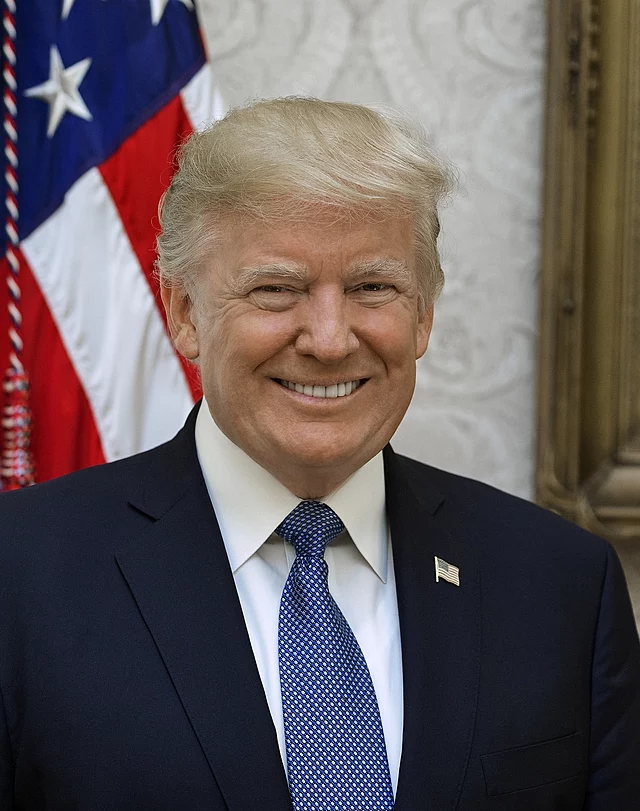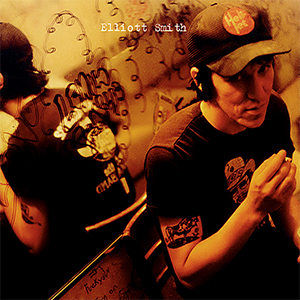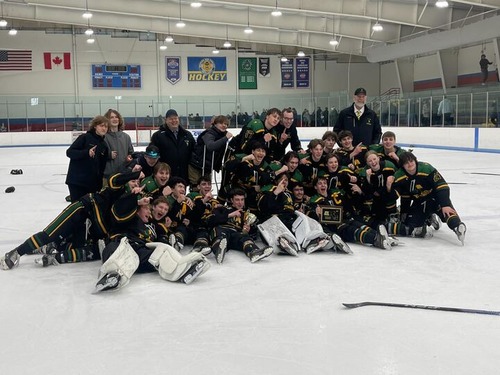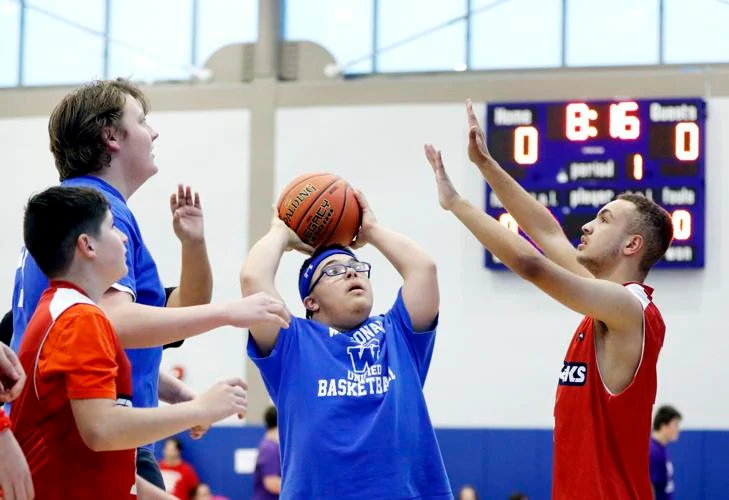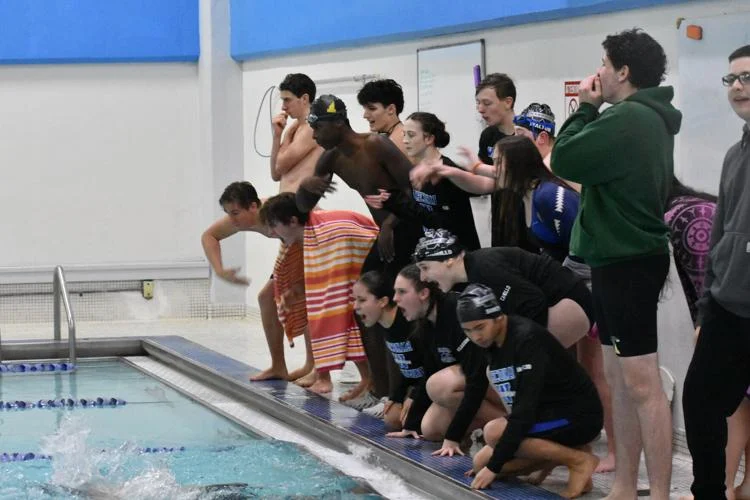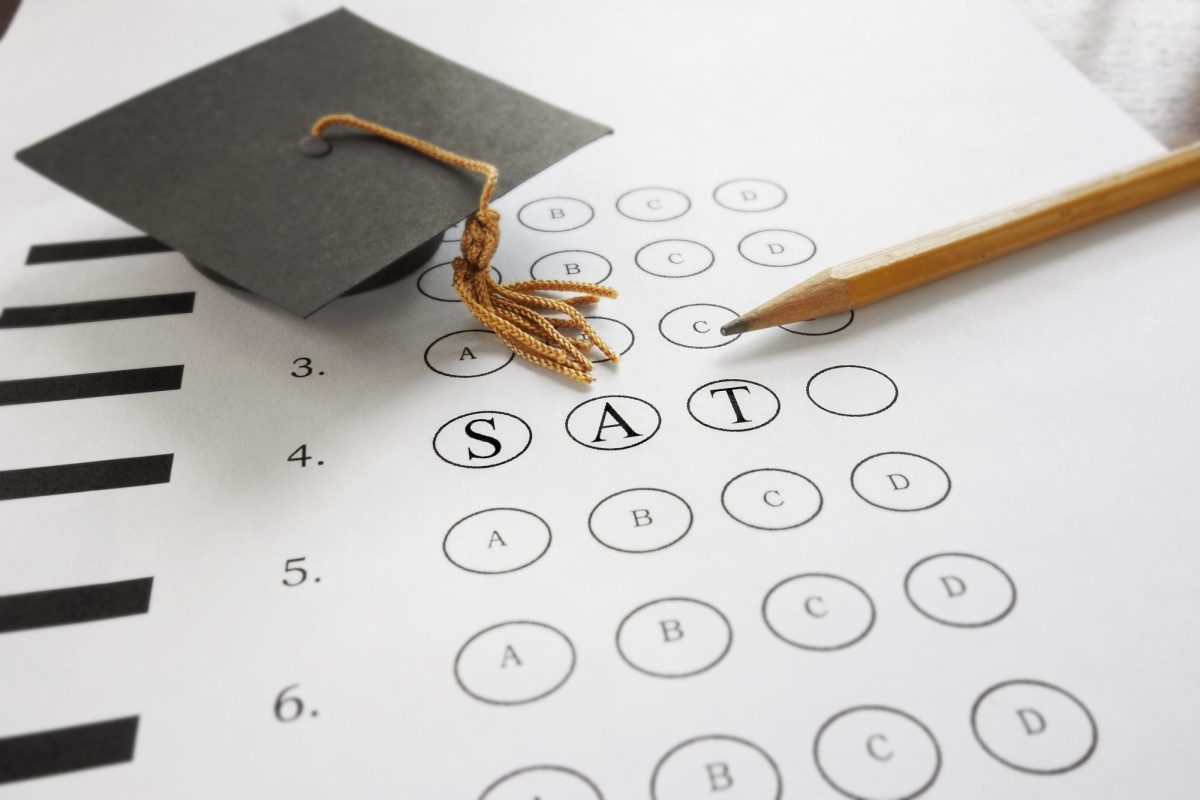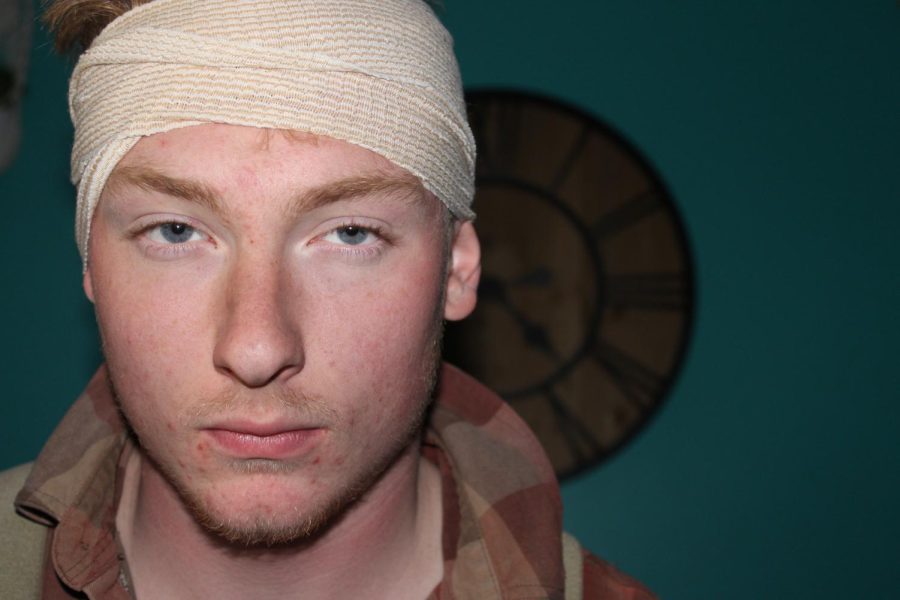Concussion Protocol Controversy
October 22, 2022
The Miami Dolphins line up late in the second quarter in week 3 against division rival Buffalo Bills. Dolphins quarterback, Tua Tagovailoa, is playing his 10th game since a serious ACL injury hindered his mobility against sacks.
As soon as the snap is called, the Bills crash the line, forcing Tagovailoa to toss the ball away to at least prevent a loss of yardage. In one of the blitzes, Bills linebacker Matt Milano is unable to avoid hitting the quarterback, managing to mitigate the hit into a light shove to the ground.
On his way down, Tagovailoa falls straight on his back, his head carrying his weight as it slams into the ground. Getting himself back on his feet from reflex, he stumbles a few steps on his way to the sideline before falling onto his hands and knees, an extremely troubling sign following a hit to the head. Plays like these, while unfortunate, are regular in the NFL and contact leagues across the world, which is why concussion protocols have been established to keep players safe from one of the worst permanent traumas from sports- head injuries.
Halftime soon began and ended, and the third quarter started with an alarming sight for the millions watching the 4:30 game- Tagovailoa returned and was under center less than 10 minutes after the hit. The decision caused a few ripples in football discussion, but was forgotten days after as Tagovailoa displayed no troubling signs of a head injury and the team secured a win. Less than 4 days later for the Thursday Night Football game of the following week, Tagovailoa- his injury from the week prior left largely unmentioned- took another snap late in the second quarter against the Cincinnati Bengals.
Once again with his blockers crashing and pressure coming, Tagovailoa began to run to the right but was caught by a fast-moving defender, who grabbed him down for the sack. Much more violent than days prior, this hit involved the quarterback’s head slammed onto the turf, immediately holding his hands in front of his face and laying on his back (a concussion reaction known as ‘fencing response.’)
Cameras were cut and a short commercial break was run. When the broadcast returned, most of the Dolphin’s sideline was surrounding the injured player in a semicircle. Tagovailoa has stretchered off the field and taken to the University of Cincinnati Medical Center. Tagovailoa was released from the hospital hours later with a minor headache and neck pain, and his MRI scan is being processed as of the time of this article. The circumstances of this hit have started an investigation into both the evaluation of the Dolphin’s training staff and the NFL’s concussion protocol as a whole.
Medical professionals, players, and training staff of other NFL teams, the NFLPA (Union for the NFL representing the players,) and even United States Congressman Bill Pascrell have weighed in on the egregious decision to clear Tagovailoa to play both Sunday and Thursday. Tagovailoa’s story has become another scenario for experts to cite to express concerns for the safety of concussion protocol in contact-heavy sports.
The story of former Pittsburgh Steelers wide receiver Antonio Brown is another largely-used example of this. A very impressive two-year stretch for Brown was ended suddenly by a grossly unsportsmanlike hit to the head. Since the hit, Antonio Brown’s demeanor became arrogant and hostile, leading to him leaving the Steelers and hopping teams, ending up on the Buccaneers. During a game against the Jets, Brown had an outburst in which he took off his upper pads and ran into the locker room. There has been speculation that the hit sustained in that game and subsequent grade 1 concussion had a heavy impact on the downfall of Antonio Brown’s career.
The National Hockey League also saw dangerous moments relating to head injuries. Just last year during the 2021 Stanley Cup Playoffs, three concussion-related injuries to Blackhawks’ David Toews, Maple Leaf’s captain John Tavares, and Canadians’ Jake Evans during games led to each player being stretchered off, taken to the hospital on two occasions.
Medical professionals around the world of sports in the past few decades have studied the effect of head trauma on the brain, both physical and psychological. One term that has been largely brought to the surface has been chronic traumatic encephalopathy or CTE for short. Besides the obvious immediate effects of traumatic brain injuries (TBIs) like loss of consciousness and confusion, CTE has been speculated to lead to major shifts in reasoning & temperament. CTE has also been observed in recent decades to lead to an increased risk of developing Alzheimer’s, episodes of poor judgment, and heightened suicidal tendencies.
Cases like Antonio Brown’s have been ongoing in the NFL for decades. Last year, former running back Phillip Adams murdered 5 civilians and committed suicide after an outburst. Over 20 years ago, wide receiver Rae Carruth was charged with engaging in a murder plot against his wife. The countless stories of former players suffering from impaired judgment and committing unthinkable actions like the ones mentioned have seriously changed the discussion on how concussions are affecting players’ mental health.
As mentioned, CTE can have permanent physical consequences, like the tragic story of Steve Montador in the NHL. Montador was found dead in his home in 2015, his cause of death was sudden. After a months-long investigation into his cause of death, researchers noted that Montador’s brain had suffered from CTE, and people around him months before his death gave accounts that his mannerisms had severely changed. Montador’s estate sued the NHL over concussion safety soon after. CTE in sports has been cited in several studies on traumatic brain injuries and has been credited as a leading source of brain injury-related conditions.
A study conducted by Columbia University neurologists in 2019 includes the NFL in connection to evidence of post-concussion emotion shifts, “CTE has attracted increasing national attention because of its devastating effects in a high proportion of retired professional players of American football. In a study of the brains of deceased former football players, contributed mostly by family members, CTE was neuropathologically diagnosed in 110 of 111 of National Football League (NFL) veterans. In the CTE-positive subjects, the authors observed extensive brain atrophy, astrogliosis, myelinated axonopathy, microvascular injury, perivascular neuroinflammation, and phosphorylated tau protein pathology.” While several leagues have been greatly improved in the last twenty years to better protect players from head injuries, there are still many gaps in rules or equipment that have caused scary, avoidable moments like this from happening.
The biggest story of the 2010 NFL season, for example, was the NFL’s updated rule policy to punish players more for hits to the head. The season also created the Heads Up Football program, a way to teach youth football players to play at lower risk of head injuries, as trends from the years prior were showing a sharp upward trend of youth football-related concussions.
An investigation has been started on all levels of the NFL and the Miami Dolphins organization into the circumstances of Tagovailoa’s injury. Tagovailoa recovered the same night of his second injury and released a statement thanking everyone for the outpour of support.
Members of the NFLPA have blasted the NFL for their negligence in letting Tagovailoa start Thursday night, much less return to the game he was injured in. Los Angeles Rams star cornerback Jalen Ramsey went on a rant during a press conference about the NFL’s strict rules against trivial issues compared to their regulation of concussions.
“Player safety should be one of the most important things to talk about. It should probably be talked about more. And then s— like getting fined for socks or s— like getting fined for tights or BS or anything like that. That needs to not be talked about as much.” The NFL’s Chief Medical Officer, Allen Sills, will lead the investigation and will release the full results at its completion.
According to the training staff which cleared Tagovailoa, the quarterback did not display ‘no-go’ symptoms which would take him out of the game. The no-go policy states that if a player displays signs of confusion, unconsciousness, or serious risk of further brain injury, they would be pulled from the rest of the game.
Both investigations started less than 14 hours after Tagovailoa was released from the hospital. The first investigation is regarding how seriously the medical staff followed this process with Tagovailoa. As of now, one of the consultants who evaluated the player after the first hit has been fired.
According to Miami Dolphins management, the hit on Thursday night had no correlation with the hit on Sunday, and Tagovailoa would have fallen unconscious even without the events of the week prior. Allen Sills expressed that Tua had been evaluated every single day between the two games, and had no signs of risk for further head trauma.
Dolphins head coach Mike McDaniel reiterated this sentiment, emphasizing that he would have never played Tagovailoa on Thursday if he believed he was at serious risk of further head trauma. The second investigation is looking into the efficacy of the NFL’s concussion protocol as a whole, and whether the protocol as a whole is effective enough at mitigating brain injuries.
As mentioned, the NFL has a number of measures to ensure player safety, most recently including the mandate that linemen and linebackers wear Guardian Caps (padded helmet covers) during practices. NFL executive Jeff Miller noted that “[The NFL] saw a more than 50% decrease in concussions among the effective groups.”
Another prominent development in concussion protection for players is improving the structure of football helmets. Both the NFL and top sports equipment manufacturers have collaborated with biomechanical experts to rank the helmets available to players by their protection against head injuries. From there, companies are continuing to improve the design of some of the most widely-used helmets, among them are the Riddell Speedflex, Xenith Shadow XR, Schutt F7, and most recently, the Vicis 02, which have all been extensively tested and ensured for improved injury protection.
The design of the helmet can only do so much, however. Willy Moss, a physicist, and NFL equipment safety consultant told the New York Times in a 2020 interview “You can make whatever changes you want, but in the end, it’s all physics.” “The top five or six pro helmets are interchangeable, well-designed, and perform well. But we have to be clear: This is about risk reduction.”
The investigation is ongoing, but fortunately, the topic of concussion safety has been brought back into national attention, at best Tua Tagovailoa’s injury sparks a large reform of how the NFL approaches concussion safety, which continues to be one of the highest concerns for the NFLPA.
The risk of head injuries extends to youth football as well as there has been a large decline in participation from flag football to high school. According to Statista, 8.4 million people above age six participated in tackle football programs. By 2018, the number was down to 5.16 million. Among the various reasons for this decline in players, such as the COVID-19 pandemic and the higher cost of living in the United States, injury risk has been one of the largest contributors to parents electing not to allow their children to participate in tackle football. More specifically, the risk of concussions and the recent stories around them at the professional and youth level have raised concerns. There have, however, been measurable efforts to address these concerns in recent years, including the Pop Warner youth football program banning kickoffs at lower age levels. Members of the youth football community around the country are optimistic that the population of youth players will rise in the coming years after the pandemic, and that the results will appear in due time.
‘Second impact syndrome’ has been a debated condition in the neurological pathology field, a sentiment that the Dolphins organization profusely expressed. It is entirely possible that Tagovailoa would have been stretchered off even without the events of the week prior, but putting a quarterback that took a serious hit to a permanent-injury-prone organ into a high-risk sport should put both the league and Dolphins to be subject to repercussions, and set a precedent that the negligence of player safety around concussions is unacceptable.
The biggest impact of this investigation should be the narrative changing about concussion safety, as CTE continues to be a serious risk associated with contact sports, as many at all levels feel leagues are not taking enough precautions to address them.
The day before week 5 kicked off on Sunday, the NFL and NFLPA agreed on a revised protocol for head injuries. The protocol covered any signs- no matter how minimal, of a brain injury that would rule a player out for the game, overriding the athletic trainers’ decision.
The next day, early in the first quarter, backup quarterback Teddy Bridgewater of the same Miami Dolphins takes a sack, hitting his head on the turf. As with the former protocol, Bridgewater was taken out of the game and to the medical tent, then given concussion tests for signs of head trauma. The athletic trainer cleared Bridgewater to return to the game, but under the new protocol passed less than 24 hours prior, he would be ruled out for the rest of the game due to signs of ataxia (impaired balance and coordination,) a ‘no-go’ condition.
The league’s response to the mishandling of the situation has been equally as controversial as the cause, with many exclaiming that the league is overcompensating for its previous mistakes. In particular, the penalty designed to reduce quarterback injury- ‘roughing the passer,’ has been called in a more egregious manner than normal. The penalty is drawn very often- the fourth most called penalty from the 2014 to 2019 season according to a recently published ESPN data analysis.
Roughing the passer was called late in the Atlanta Falcons’ week 5 matchup against the Tampa Bay Buccaneers. In the closing minutes of the game, down one score, the Falcon’s defense needed to make a final stop to keep them in the game. On third down, the Falcons manage to sack accomplished Buccaneers quarterback Tom Brady, forcing a fourth down well outside of field goal range. What could have started a potential game-winning drive for the Falcons was called back for roughing the passer.
Typically, the penalty is made if the quarterback is tackled after throwing the ball away, ensuring the passer is safe from rushing linemen. In this case, however, Brady was sacked with the ball in possession, and not in a safe manner, sparking the call to become one of the biggest conversations of that week. The call in question undoubtedly cost the Falcons a chance at winning the game, and the soft nature of the hit in question has drawn even more controversy to the NFL’s rules.
Then, less than a day later, during the week 6 Monday Night Football game between the Kansas City Chiefs and the Las Vegas Raiders, another roughing the passer call was made. This time around, the Raiders managed to get an early-game sack against Chiefs’ quarterback Patrick Mahomes, which was called off for roughing the passer. Once again, this call was extremely protested by fans of both sides, who voiced their opinion that the sack was well within the rules. Early Tuesday morning, social media and major sports outlets alike were up in arms against the NFL’s calling of these unnecessary roughing the passer penalties, which many share in stating that this is the league’s attempt to overcompensate for past mistakes.


